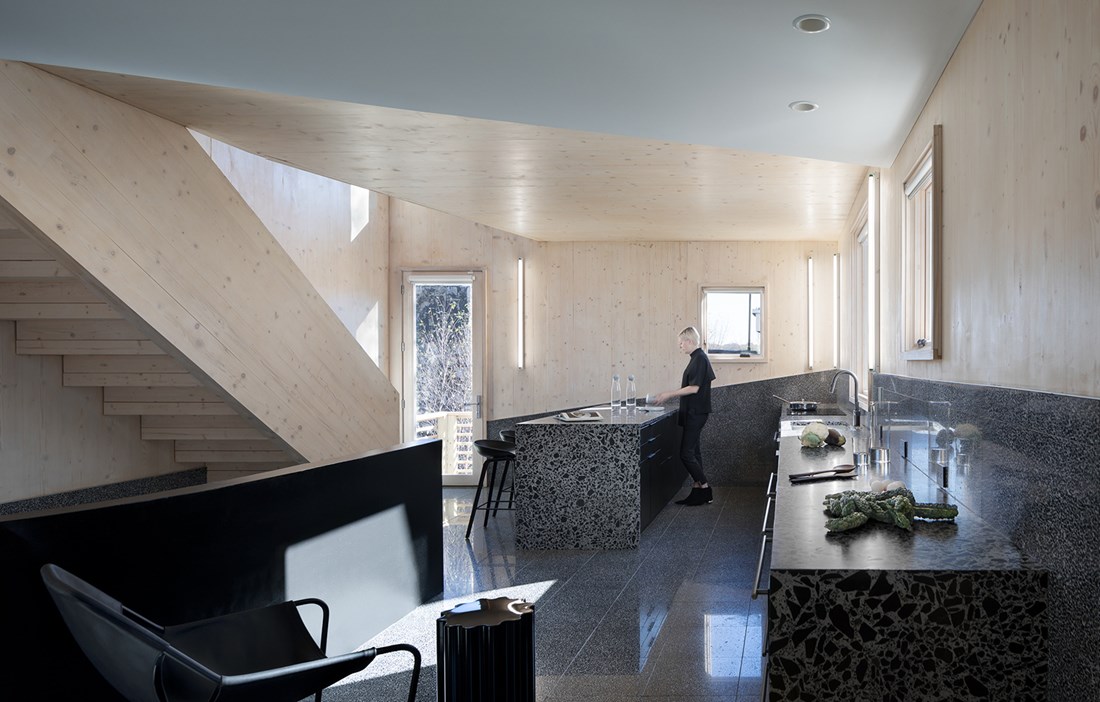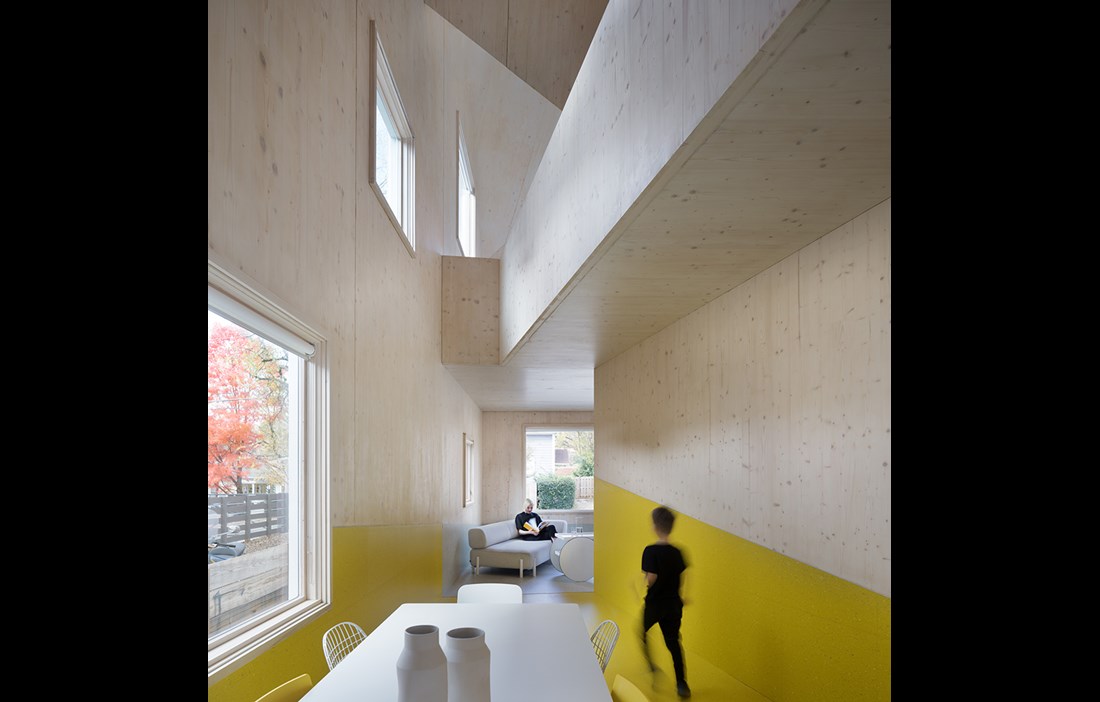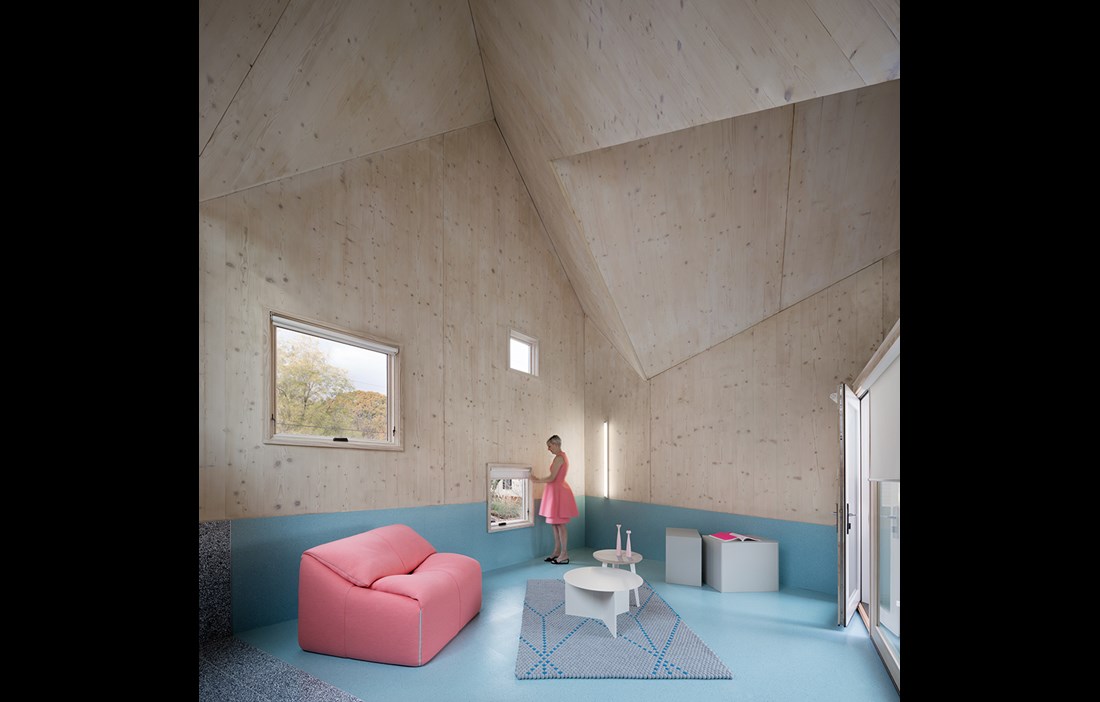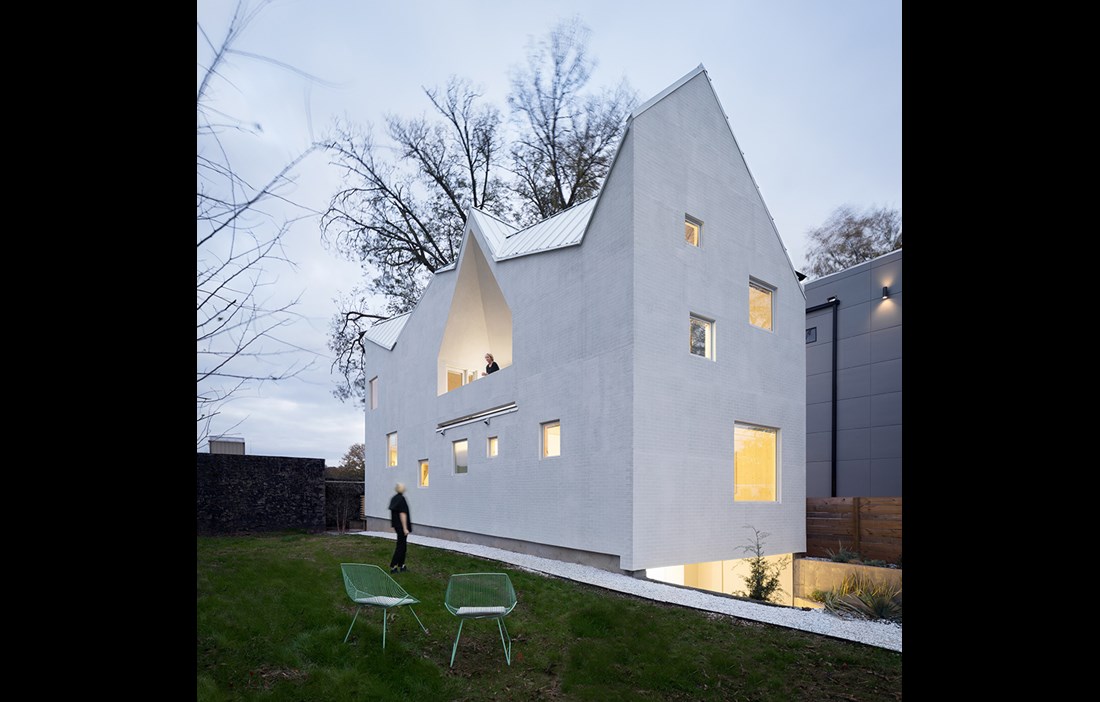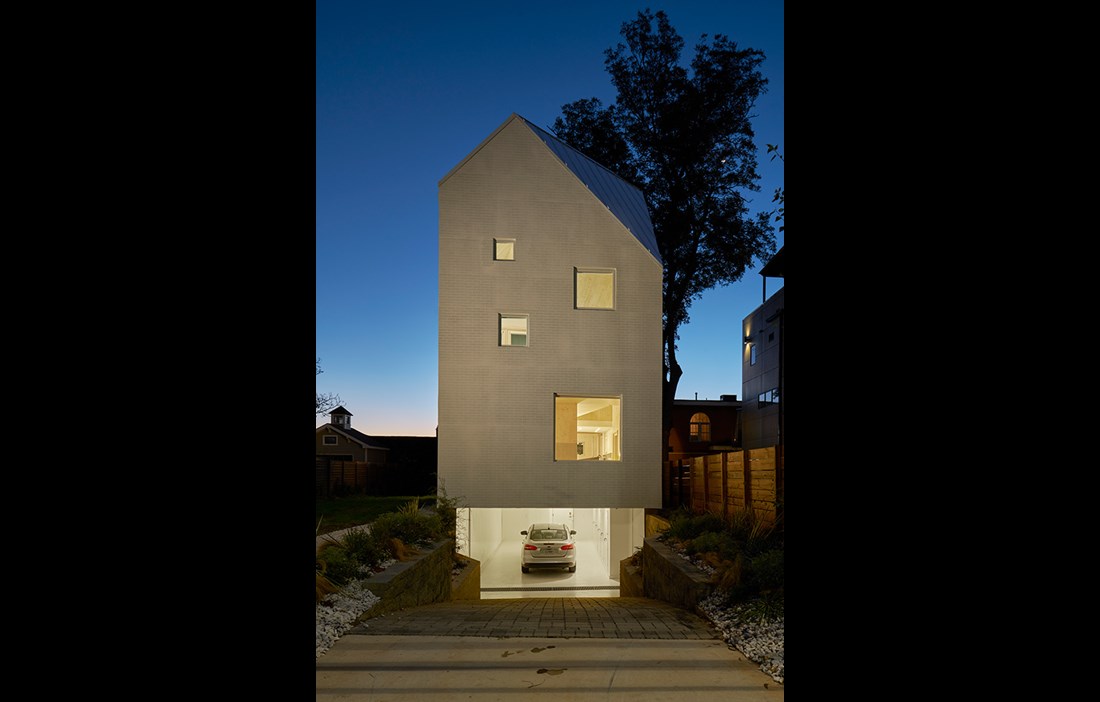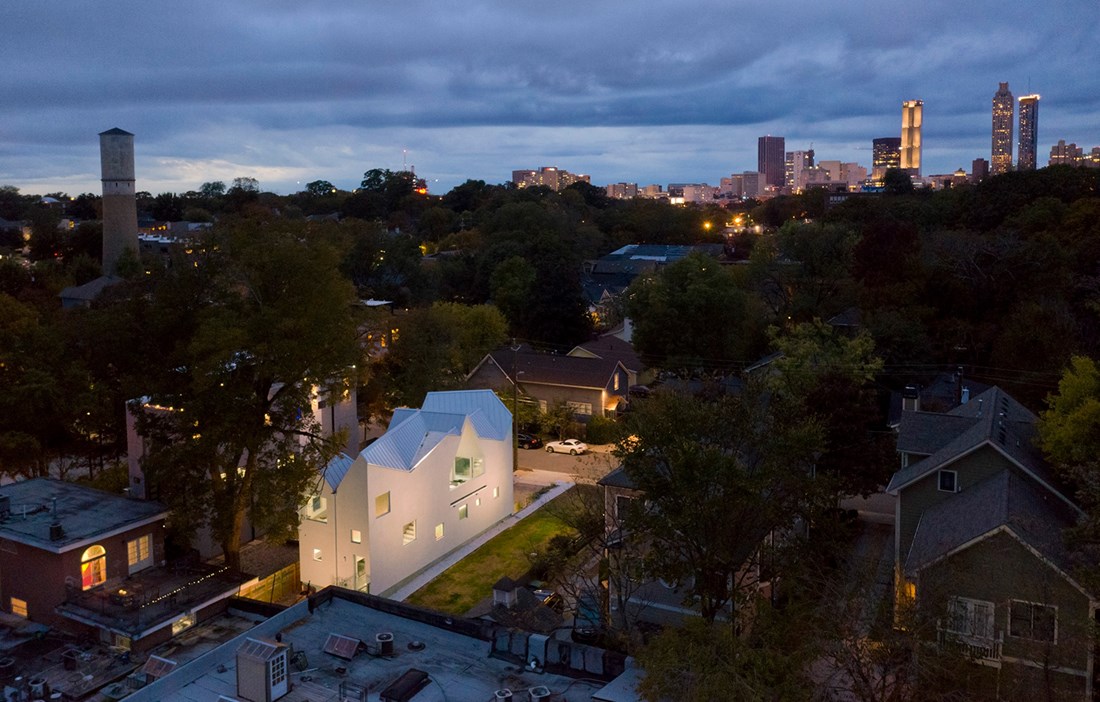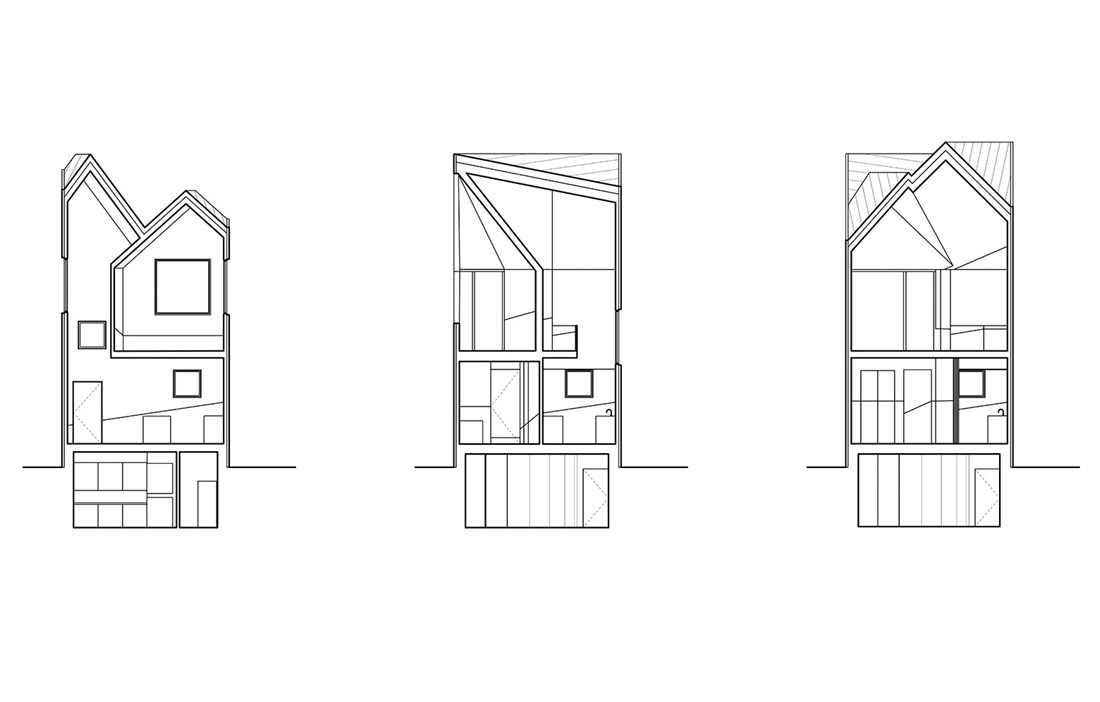There is something special about designing your first house. It can be easy to really go for it and try to realise all your architectural dreams in one building. And if you are conceptual artist Jennifer Bonner and you want to blow up one of your little models to full-scale – well, then the sky’s the limit.
“Haha, I know, it feels like I’ve tried to pack far too many of my ideas into this house. But it’s my first building! So I couldn’t stop myself,” says Jennifer.
Haus Gables has its roots in the art project “Domestic Hats” from around five years ago. The project was an extensive study in which American Jennifer Bonner produced stylised models of house roofs in Atlanta’s residential neighbourhoods. A few years later, she distilled the roof typography project down to “The Dollhaus”, which is exactly what it sounds like – a doll house. This in turn became a 1:12 scale model for Haus Gables. After 10 years of teaching at Harvard and working on her art on the side, finally one of her abstract ideas would become a reality. With a small, narrow plot in Atlanta and money from her own pocket, Bonner began to plan the house.
Haus Gables is made entirely of CLT – for the floors, the internal and external walls and the roof. But while CLT is a tried and tested building material in Europe, the structures that use CLT in the USA can be counted on the fingers of one hand. For Bonner, the material therefore became part of her experimentation.
“Early on in the project, I worked with a British engineer. When I told him I wanted an exposed ceiling, so you could really experience its space and geometry, he said I should consider using CLT. At the time, this was something new and exciting to me. But now I’m a huge fan of CLT! It feels like a natural continuation of the tradition to build in timber. In addition to its sustainability profile, in the USA it could be an alternative to our internal walls, which are almost exclusively plasterboard at the moment.”
The house comprises 87 CLT elements that were transported to the construction site on 11 trailers. No two panels are the same. Bonner was on site as often as she could be, initially to check that all the elements she had ordered were the right size. But she also continued to commute between Boston and Atlanta to check that the construction workers were handling the wood correctly. Because they were used to working with plaster walls, they were quick to fill in holes and other imperfections in the wood, something that Bonner then had to correct with sandpaper and other tools to bring back the wood’s unique character.
Although Bonner was keen to make the quality of the wood visible in certain places, she was equally eager to eliminate it in others. Because, as she puts it, using too much exposed wood would create far too Scandinavian a look. She therefore had several walls and parts of the façade covered with fake material – a nod to her childhood in the American South, where imitation marble and mosaicking has long been used in poorer areas to give a sense of wealth. The first impression is that the material indicates where one room ends and another begins, but in reality this is not the case at all. The fake material was applied as a kind of thin decal, so it became more or less part of the wood.
For Bonner, it had two functions. One was to provide a kind of counterpoint to the wood, and the other was to cover over the places where cabling and pipes had been run. All the façade walls have been covered with white stucco that imitates brick, but two of them have also been given an extra finish.
“We sprayed them with the same type of tiny reflective glass beads that are found in the lane markings on motorways. This means that in a certain light the house shimmers and shines. I was a little worried about what it would actually look like, and whether the neighbours would complain. But it wasn’t too bad. In fact, it turned out really well.”
What truly gives the house its character, however, is its roof. It was here that the project began, with the rest of the building largely determined by the roofline. In exposing the ceiling, the shape also influences the interior. The ceiling rises up high in certain rooms, while in other places it drops down. Placing 22 square windows in apparently random locations makes it hard to see from the outside where the rooms are located and which floor each window belongs to. A colleague of Jennifer Bonner’s summed it up neatly: “The house is four times as big on the inside as it is on the outside”.
“Although the house is on a really small plot, it doesn’t feel like that at all when you’re inside. The roof creates an airy feel, with several of the rooms enjoying high ceilings and plenty of natural light from at least two or three windows.”
Bringing together six different roof types on one building creates a chaotic and erratic impression. And this rather mixed-up design made it hard to convince CLT manufacturers that their material was the right choice. With all the nooks and angles in the building, it wasn’t considered cost-effective to cut out the 87 entirely unique elements. They thought it would generate too much waste. But Bonner managed to show that there was an efficient way of cutting several elements from one block of CLT – finally convincing Austrian manufacturer KLH.
“I’m pleased that we were able to use the material. CLT is capable of handling large spans, so it offered an easy way to create the volumes I wanted. Many people choose CLT so they can build quickly, sustainably and cost-effectively. And of course all that is great, but for me it was about demonstrating that you can create so many different geometric shapes with CLT,” says Jennifer Bonner.
The structure was erected in 14 days and Bonner followed the build with fascination. As the cranes lifted the walls and roof in place, she had a front-row seat as her doll house was brought to life. After many years in the academic and art world, Bonner had been thinking about what architecture actually is. Her conclusion was that theory and practice can sit very close to each other.
“Where is the boundary between a model house and a finished project? I feel that there isn’t necessarily a difference. A drawing or model can also be considered a finished architectural project. When I think about the people who live in a house, I imagine them walking around inside the little model I created. Inside the doll house.”
Text Erik Bredhe

